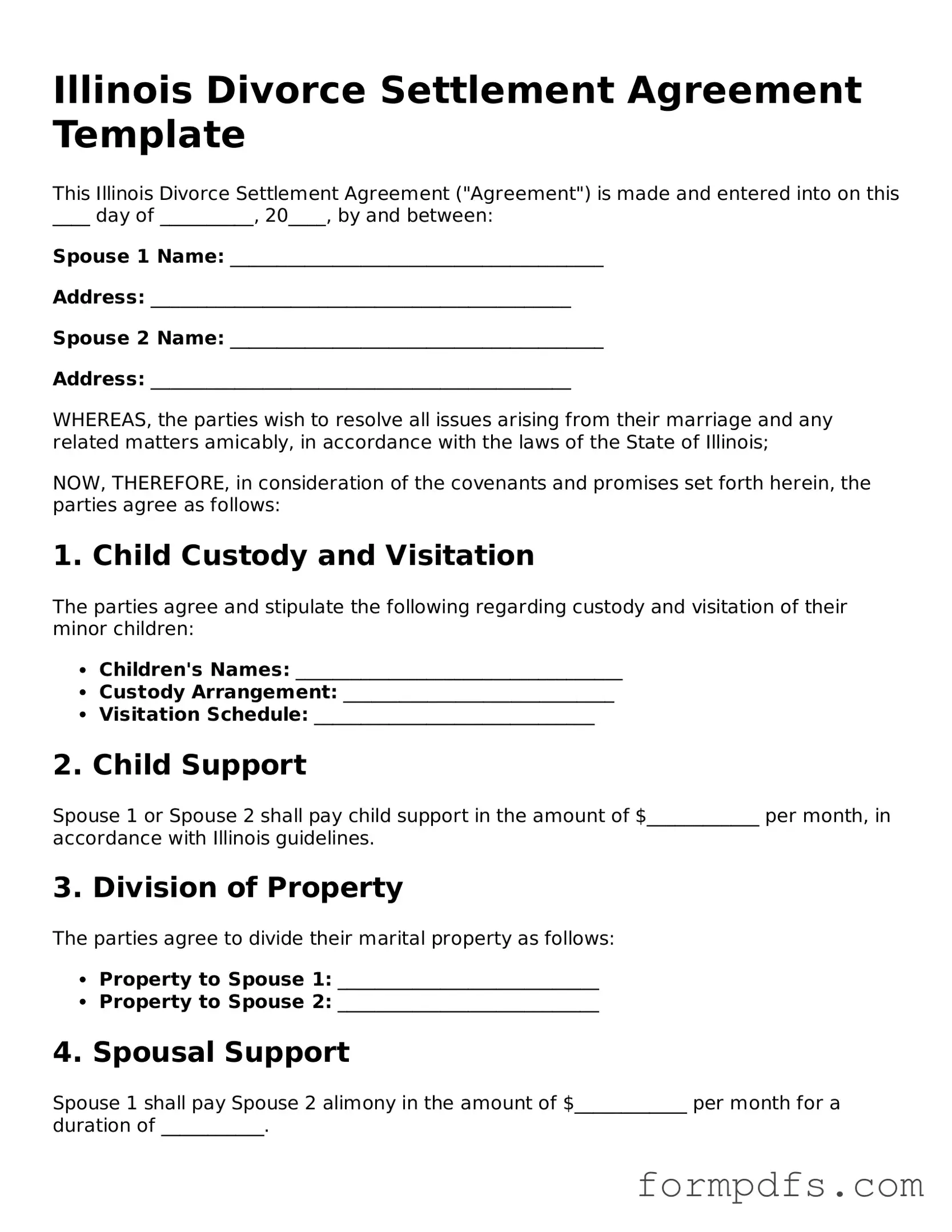Printable Divorce Settlement Agreement Form for the State of Illinois
The Illinois Divorce Settlement Agreement form is a legal document that outlines the terms and conditions agreed upon by both spouses during a divorce. This form addresses important issues such as property division, child custody, and support obligations, ensuring that both parties understand their rights and responsibilities. To begin the process, consider filling out the form by clicking the button below.
Open Divorce Settlement Agreement Editor
